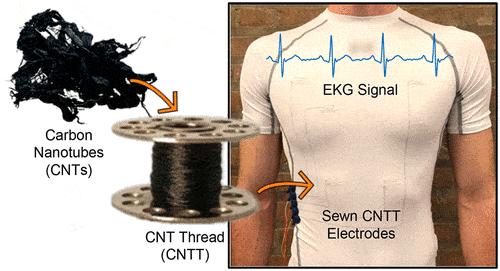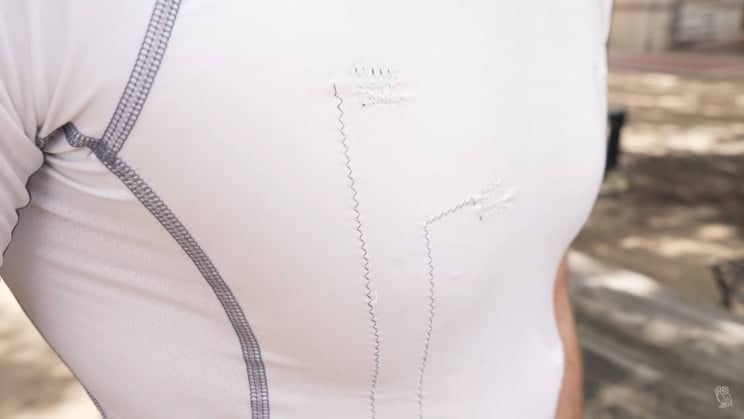Rice University researchers they developed flexible carbon nanotube fibers that can collect accurate ECG and heart rate readings when woven into a fabric. They made us a super light, snug t-shirt that can measure vital signs.
The new material is soft like cotton but strong like Kevlar. It is also conductive like a number of metals and a shirt like this could be the future of wearables.
A t-shirt to have everything under control

The shirt obtained by the Rice team can be worn, and even washed like a normal piece of clothing. On the contrary: its fibers are also much less likely to break when a body is in motion. But otherwise how does it behave?
The researchers reported that the shirt collected much better data than a standard chest strap monitor and performed much better than commercial medical electrode monitors at taking ECGs.
A t-shirt spun in carbon nanotubes
This “diagnostic” shirt is made of a conductive nanotube thread that adds several features to regular clothing. “The shirt must be close to the chest,” he says in a note Lauren Taylor, lead author of the study. “In future studies, we will focus on using denser patches of carbon nanotube threads so that there is more surface area in contact with the skin.”
Carbon nanotube fibers were first developed by Matteo Pasquali, a laboratory engineer at Rice University. Pasquali has studied many applications for fibers, including their use as bridges to repair damaged heart tissues, electrical interfaces with the brain, cochlear implants, flexible antennas. Even for automotive and aerospace applications.
Problems overcome
Initially, the fibers were too thin for a sewing machine to handle. It was then that the researchers enlisted the help of a rope maker to create a thread that would then form an item of clothing: a very, very special t-shirt.
“We worked with someone who sells little machines designed to make rope for model ships,” said Taylor, who initially tried to weave the thread by hand, with little success. “He was able to create a medium-scale device that does the same.”
The fibers of the shirt are sewn in a zigzag pattern: a mechanism that allows the fabric to stretch without breaking them. Future applications? Lots of: human-machine interfaces for automobiles or soft robotics, as antennas or as health monitors and ballistic protection in military uniforms.


